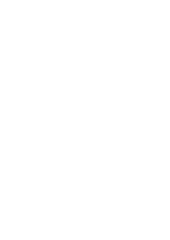 |
 |
 |

|
Figure 2: Luminus produced by Glas Italia
|
|
 |
THE GLASS TABLE IV
The Invisible Light: glass tables from Tokujin Yoshioka
Tokujin Yoshioka (°1967 Japan) graduated at the Kuwasawa Design School inTokyo, Japan and studied design with Shiro Kuramata (1987) and Issey Miyake (1988). He established the Tokujin Yoshioka Inc., his own design studio in 2000 in Tokyo, Japan. He worked with Japanese and international companies such as Hermès, Toyota, Miyake, Nissan, BMW, Shiseido and Swarovski, designing showrooms and installations
|

|
Posted 4 June 2013
|
Share this:
|
|
|
|
|
|
|
|
|
|
The Invisible Light: glass tables from Tokujin Yoshioka
Dirk Schrijvers
Tokujin Yoshioka (°1967 Japan) graduated at the Kuwasawa Design School inTokyo, Japan and studied design with Shiro Kuramata (1987) and Issey Miyake (1988). He established the Tokujin Yoshioka Inc., his own design studio in 2000 in Tokyo, Japan. He worked with Japanese and international companies such as Hermès, Toyota, Miyake, Nissan, BMW, Shiseido and Swarovski, designing showrooms and installations. After the success of the Honey-pop paper chair in 2001, he established a close link with furniture producing companies and designs products for Driade, Moroso and Kartell.
His work is on display at the MoMA and the Cooper Hewitt in New York, USA, the Victoria & Albert in London, UK and the Vitra Design Museum, Weil am Rhein, Germany.
“Designs are not things you create. They are things that you allow to come about. Design is not something you talk about. Things speak for themselves, and are best understood naturally when left to do so.”
His design philosophy starts with the interpretation of objects by the study of the sensuality of the material, the world of imagery and their conceptual physics. He works on the border of art and design and the work is a natural extension of his views on a specific topic. By such an approach, his work is an open system in which the material grows, happens and transforms through contact with the body. Yoshioka adores the transparency and thinness of the object and tries to make the material speak by its most simple, bare form thereby expressing its integrity. By this feeling of simple design and expression of an honest approach towards everyday existence in his designs, he leans to Jasper Morrison’s ‘Super Normal’ philosophy. His creations incorporate a poetic, light, and dreamlike quality; his products, interiors and installations are the result of painstaking, complex research carried out on simple materials, combined with experimental technology. For his glass designs, he finds his inspiration in the glass object from Ettore Sottsas.
Glass tables by Tokujin Yoshioka
His first furniture in glass was the ‘Chair that disappears in the rain’, a glass seat that seems to dissolve in the surroundings and was executed in 2003 for an event in the Roppongi Hills in Tokyo, Japan. The surface of the chair is curved so that it gives a feeling of fluidity. This concept is also present in the chair ‘Kiss me goodbye’, produced by Driade (2004), that was conceived as a formless object that cannot be seen or smelled, but that, by seating on it, conveys a notion of floating in space without gravity. Although this product is not executed in glass, the transparent polycarbonate has glass-like characteristics.
A referral to nature is found in the line of side tables, the Hexagon collection, inspired by the honeycomb and produced by Desalto (Figure 1). Pure and rigorous forms to which are added details executed with meticulous precision. The various dimensions and heights allow combinations and overlaps to respond to the most diverse requirements of use.
In collaboration with Glas Italia, Yoshioka created Luminous (Figure 2a+b), a glass table that is inspired by light and almost disappears in the living space. Realized in a solid glass structure, the table obtains its distinctive appearance through the refraction of light. The details are subtle yet decisive, including precise angles and joinery that is in harmony with the whole of the design.
The glass products reflect his search to making objects more etheric and putting a less explicit impression in the environment.
References
http://www.desalto.it/Home/Designers/tokujin-yoshioka_25
http://www.revolversf.com/blogs/news/1819452-design-theory-chat-with-tokujin-yoshioka
http://www.luminaire.com/designers/tokujin_yoshioka/
http://www.mariazanolli.com/index.php/interviste/interview-with-tokujin-yoshioka
http://designblog.rietveldacademie.nl/?p=14345
http://www.japanpolicyforum.jp/en/archive/no5/000208.html
http://books.google.be/books
id=pOD93A6L_3kC&pg=PA170&lpg=PA170&dq=Tokujin+Yoshioka's+design+philosophy&source=bl&ots=hEOA-PcnRc&sig=n3IQ1m-1zoiGqrTOXZAb06l81pE&hl=nl&sa=X&ei=BHq9UYPBGsTOOb_egBg&ved=0CFEQ6AEwBTgK#v=onepage&q=Tokujin%20Yoshioka's%20design%20philosophy&f=false
|
|
|
|
|
|
|


